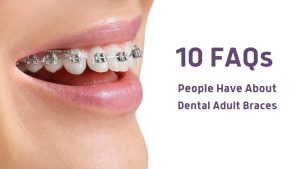Not known Factual Statements About Legacy Orthodontics
Not known Factual Statements About Legacy Orthodontics
Blog Article
Not known Facts About Legacy Orthodontics
Table of ContentsLittle Known Facts About Legacy Orthodontics.The Definitive Guide to Legacy OrthodonticsMore About Legacy OrthodonticsAn Unbiased View of Legacy OrthodonticsNot known Incorrect Statements About Legacy Orthodontics
In enhancement, we supply adjustable treatment schedules, adaptable settlement alternatives and an enjoyable, pleasurable experience.An orthodontist is a dentist trained to diagnose, stop, and treat teeth and jaw abnormalities. Orthodontists function with people of all ages, from children to adults.
Malocclusion, or misaligned teeth, can lead to dental problems, including dental caries, periodontal condition, and hard or unpleasant chewing. However not everyone is born with straight teeth. If you have a negative bite or huge areas between your teeth, you may want to consult a dentist focusing on orthodontic care.
More About Legacy Orthodontics
( Image Credit Score: DigitalVision/Getty Images) Orthodontists utilize dealt with and detachable oral tools, like dental braces, retainers, and bands, to alter the setting of teeth in your mouth. Orthodontic therapy is for oral irregularities, consisting of: Crooked teethBite problems, like an overbite or an underbiteCrowded teeth or teeth that are as well far apartJaw misalignmentThe goal of orthodontic treatment is to improve your bite.
While you could think of orthodontists as generally for children or young adults who need braces, they can remedy dental problems at any kind of age. Orthodontists participate in university, dental college, and orthodontic institution.
, but not all dental experts are orthodontists. They focus on two areas: How to appropriately and safely relocate teeth How to correctly lead advancement in the teeth, jaw, and faceOnce an orthodontist has actually finished training, they have the option to become board certified.
Legacy Orthodontics Can Be Fun For Anyone
Imbalance, or malocclusion, is the most typical factor individuals see an orthodontist. It is genetic and is the result of size distinctions in between the top and lower jaw or in between the jaw and teeth. Malocclusion causes tooth overcrowding, a twisted jaw, or uneven bite patterns. Malocclusion is generally treated with: Your orthodontist connects metal, ceramic, or plastic square bonds to your teeth.
If you have just minor malocclusion, you may be able to use clear braces, called aligners, as opposed to conventional dental braces (https://legacyortho1.weebly.com/). Some individuals need a headgear to assist relocate teeth into line with pressure from outside the mouth. After braces or aligners, you'll need to use a retainer. A retainer is a custom-made device that maintains your teeth in position.
They're usually utilized on children. They can create extra space in the mouth without having to pull teeth. If you have a severe underbite or overbite, you could require orthognathic surgery (also called orthodontic surgical treatment) to extend or reduce your jaw. Orthodontists utilize wires, surgical screws, or plates to sustain your jaw bone.
You may need to see an orthodontist if you have: Crowding or not adequate space for every one of your teethOverbite, when your top teeth come by your base teethUnderbite, when your base teeth are as well far forwardSpacing or issues with gapsCrossbite, which is when your upper teeth fit behind your base teeth when your mouth is closedOpen bite or a vertical space between your front base and upper teethMisplaced midline, when the center of your bottom and upper teeth do not align Correcting a dental malocclusion can: Make biting, chewing, and speaking easierImprove the balance of our face and your total appearanceEase discomfort from temporomandibular joint problemsDifferent your teeth and make them much easier to cleanse, assisting protect against tooth degeneration or dental caries It's usually a dental expert that initially notices misaligned teeth during a routine examination.
The Best Strategy To Use For Legacy Orthodontics

During your initial orthodontic appointment, you'll likely have: A dental examPhotos taken of your face and smileDental X-raysPanoramic (360 level) X-rays of your face and headImpressions to develop molds of your teethThese tests will certainly aid your orthodontist recognize how to proceed with your treatment. leesburg orthodontics. An orthodontist is a dental professional who's had training to treat your teeth and jaw
Orthodontists might do surgical procedure, exams,X-rays,and more to aid you obtain a more comfy, much healthier smile. An orthodontist is concentrated on your bite, so something like a chipped tooth would be taken care of by a dentist. Orthodontists are dental experts however not all dental practitioners are orthodontists. Orthodontists are concentrated on your bite, or the way your teeth meshed, and the straightness of your teeth.
Ever wondered exactly how celebrities always seem to have completely lined up teeth? Orthodontists are oral experts who focus on fixing abnormalities in the teeth and jaws.
Legacy Orthodontics - Questions

, orthodontists have a varied toolkit at their disposal. These reliable dental braces utilize a system of brackets adhered to the teeth and linked by cables.
Clear aligners, like Invisalign, are a prominent option for patients looking for a more discreet treatment alternative. These detachable trays are customized to progressively change the teeth's placement. Headwear may be made use of along with braces or aligners to apply added targeted forces, especially for fixing jaw discrepancies. In situations of slim jaws, palatal expanders can be made use of to develop area for proper tooth alignment.
Report this page